Some of the links in this article are affiliate links, meaning that if you click the link, I may get a small portion of the sale at no cost to you. In no way does this affect our description or review of the following products. As an Amazon Associate, I earn from qualifying purchases. This is of no cost to you and does not skew our recommendations.
In a world increasingly conscious of the environmental impact of fashion, a new, sustainable material is taking the industry by storm: cactus leather.
Now you’ve heard it all! leather made from the pulp of cactus plants. It is a great replacement for the years of plastic vegan leather. This leather is not only durable, but also eco-friendly and shaping the way we see fashion today.
Many of today’s most modern designers are turning to this new material to make the most avant-garde cactus leather purses. Its unique blend of sustainability and style has given rise to a new trend in the fashion world.
In this article, we embark on a journey to explore the world of cactus leather purses, an eco-friendly alternative that promises to redefine the way we think about fashion. From its eco-conscious origins to the stylish designs it offers, cactus leather is the perfect embodiment of sustainable, elegant, and ethical fashion choices.
Join us as we dive into the fascinating world of cactus leather, a material that is not only easy on the planet but also on the eyes.
RELATED: Introducing Eco-Leather: Your Guide to Sustainable and Stylish Alternatives
What Is Cactus Leather?
Cactus leather, also known as nopal leather or vegan leather, is a groundbreaking material that has garnered attention for its sustainable and eco-friendly properties. But what exactly is cactus leather, and how is it produced?
The Cactus Origins
Cactus leather finds its roots in the prickly pear cactus, known as the nopal cactus, which thrives in the arid regions of Mexico. This hardy and drought-resistant plant has been a source of sustenance and tradition for centuries. Now, it’s at the forefront of eco-conscious fashion.

The Production Process
The production of cactus leather involves several steps designed to minimize its environmental impact. The process starts by harvesting mature leaves of the nopal cactus. These leaves are carefully cleaned and then mashed into a pulp. This pulp is later dried, forming a flexible, organic material with a texture remarkably similar to traditional leather.
Eco-Friendly Advantages
Cactus leather boasts several eco-friendly advantages over animal leather and even some synthetic alternatives. First and foremost, it doesn’t involve the use of animals, which reduces the ethical concerns associated with leather production. Moreover, its cultivation requires minimal water, making it an excellent choice in water-scarce regions. The production process also avoids harmful chemicals commonly used in traditional leather tanning.
Versatility and Sustainability
Cactus leather’s versatility allows it to be used in a wide range of products, from purses and bags to shoes and accessories. Its sustainability, from cultivation to processing, aligns perfectly with the principles of eco-conscious living, making it an attractive option for those who seek both style and ethics in their fashion choices.
RELATED: 15 Best Sustainable Women’s Shoes for a Greener Footprint
How is Cactus Leather Made?
Cactus leather, as showcased in the video from Desserto, is a fascinating example of sustainable innovation. The process begins with the harvesting of mature leaves from the nopal cactus, which thrives in arid regions. These leaves are cleaned and then transformed into a pulp, which is later dried and processed into a material with a texture akin to traditional leather. What sets cactus leather apart is its eco-conscious production, avoiding the use of harmful chemicals and minimizing water consumption. The resulting material is not only a stylish choice but also a testament to the possibilities of sustainable fashion. For a closer look at the production process, be sure to check out the video from Desserto.

How Does Cactus Leather Compare to Vegan or Genuine Leather?

In the ever-evolving landscape of fashion, the choices we make regarding materials have far-reaching consequences.
To help you make informed decisions, we’ve created a comparison table that juxtaposes three distinct types of materials commonly used in the fashion industry: cactus leather, traditional leather, and mainstream vegan PU/PVC. Whether you’re seeking a sustainable alternative, a classic look, or cruelty-free options, this comparison will aid you in making conscious and stylish decisions.
| Property | Cactus Leather | Traditional Leather | Mainstream Vegan PU/PVC |
|---|---|---|---|
| Source Material | Derived from nopal cactus plant | Typically from animal hides | Synthetic, petroleum-based |
| Sustainability | Highly sustainable, minimal water usage, no animals involved | High environmental impact (livestock farming, tanning processes) | Synthetic materials, moderate sustainability (depends on production methods) |
| Production Process | Eco-friendly, no harsh chemicals used | Tanning process involves chemicals like chromium and can be environmentally harmful | Synthetic production, which can release pollutants during manufacturing |
| Durability | Durable and long-lasting | Durable but can require more maintenance | Generally durable, but may not be as long-lasting as real leather |
| Biodegradability | Biodegradable | Non-biodegradable | Non-biodegradable |
| Price | Can be moderately priced depending on the brand | Often more expensive due to animal sourcing and processing | Usually more affordable than traditional leather |
| Appearance | Can mimic the look and feel of traditional leather | Recognizable as genuine leather | Can vary but often designed to resemble leather |
| Animal-Friendly | No animals involved in production | Involves animal farming and leather industry | No animals harmed, cruelty-free |
| Water Usage | Minimal water required for cactus growth | High water usage for livestock farming and tanning | Water usage varies by production methods |
| Chemical Usage | Minimal chemicals used in processing | Tanning process uses chemicals | May involve chemicals in manufacturing |
| Customization | Available in various styles and designs | Limited by natural variations | Offers versatility in design options |
| Environmental Impact | Low environmental impact, sustainable choice | High environmental impact due to animal agriculture | Moderately eco-friendly compared to traditional leather |
| Fashion Trends | Emerging as a sustainable fashion choice | Classic and timeless appeal | A growing trend in eco-conscious fashion |
Cactus Leather: The Sustainable and Ethical Choice

Cactus leather stands out as a remarkable alternative for purses and bags, offering a trifecta of benefits that set it apart in the world of fashion. Its inherent durability ensures that your cactus leather accessories withstand the test of time while remaining eco-friendly.
What truly makes it an ethical and sustainable choice is its low impact on the environment and the communities involved. From minimal water usage in its cultivation to the avoidance of harsh chemicals in its production, cactus leather aligns with eco-conscious values. By opting for this unique material, you’re not only making a fashion statement but also a statement for the planet and the well-being of those who cultivate it.
The Most Avant Garde Cactus Leather Purses Making a Statement
Cactus Leather Purse #1: Fossil Kier Tote
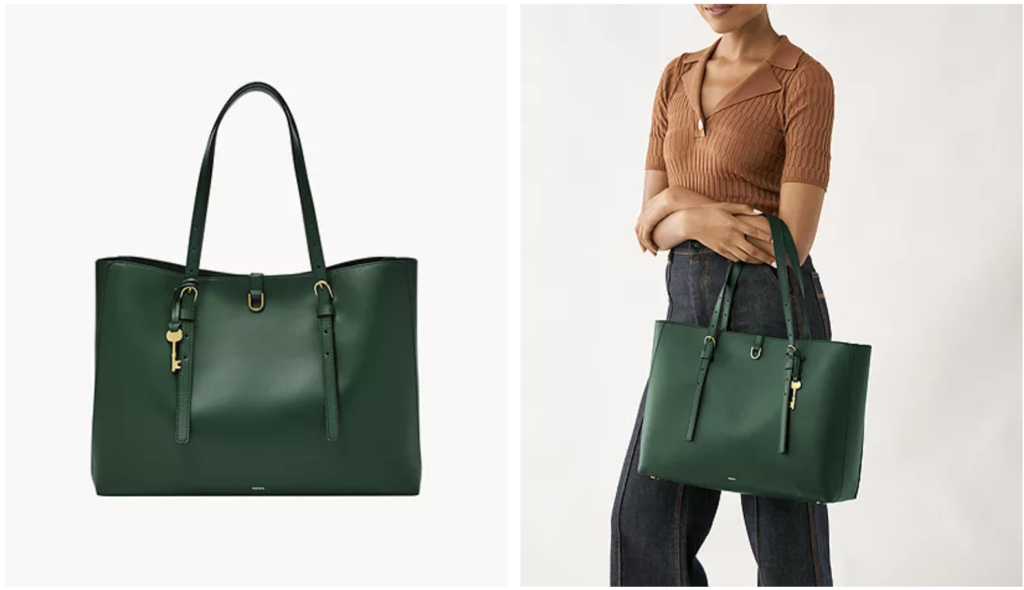
Cactus Leather Purse #2: Philippa by Mashu

Cactus Leather Purse #3: ZoccolilloSwiss


Cactus Leather Purse #4: Everlane’s Cactus Sling Bag
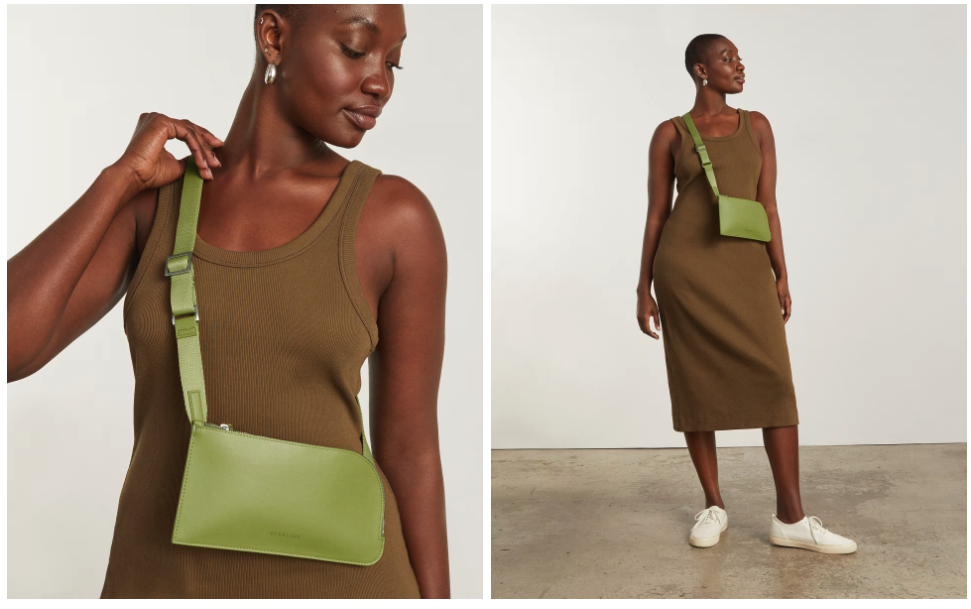
Cactus Leather Purse #5: The Cactus Hobo
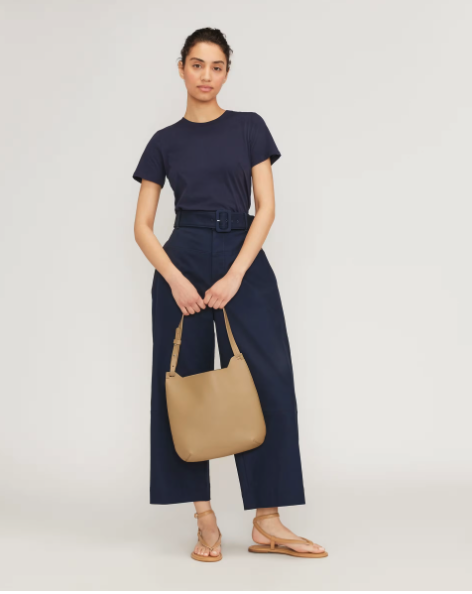

Cactus Leather Bag #6: Black Desserto Cactus Laptop Sleeve
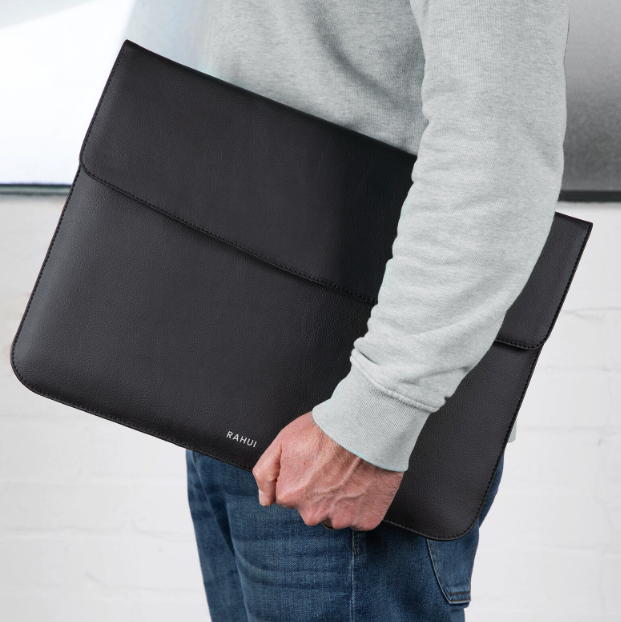
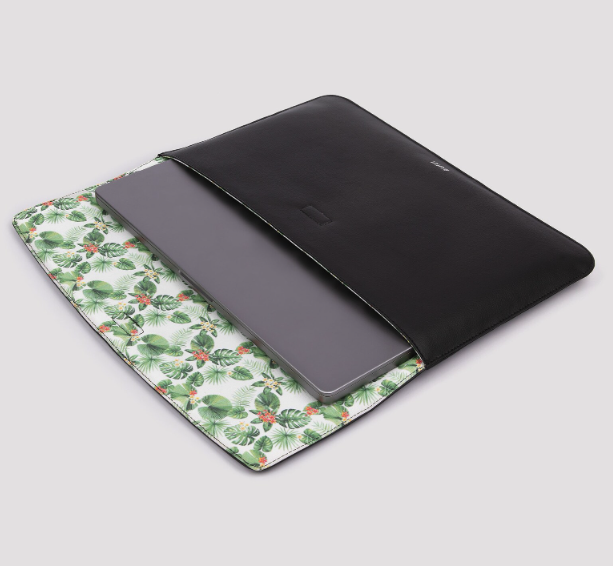
Cactus Leather Bag #7: Deiter Backpack


Maintenance and Care: Preserving the Life of Your Cactus Leather Items

Cactus leather items, known for their durability, require proper care to ensure they remain in excellent condition and provide long-lasting use. Here’s how to maintain and care for your cactus leather products:
- Regular Cleaning: To keep your cactus leather items looking their best, gently remove surface dust and dirt with a soft, damp cloth or sponge. Avoid using harsh chemicals or abrasive materials.
- Protection from Moisture: Cactus leather is water-resistant, but it’s advisable to avoid prolonged exposure to moisture. If your item gets wet, let it air dry naturally at room temperature. Do not use direct heat sources like hairdryers.
- Avoid Sunlight: Prolonged exposure to direct sunlight may cause fading or discoloration. Store your cactus leather items away from direct sunlight when not in use.
- Conditioning: While cactus leather is less prone to drying out compared to traditional leather, you can use a specialized leather conditioner occasionally to maintain its softness and suppleness.
- Storage: When not in use, store your cactus leather items in a cool, dry place. Use dust bags or cloth to protect them from dust and scratches.
- Stain Removal: If your cactus leather item encounters a stain, clean it immediately with a damp cloth. For tougher stains, consult the care instructions provided by the brand or manufacturer.
- Wear with Care: Be mindful of sharp objects and avoid excessive friction to prevent scratches or damage to the surface of your cactus leather item.
- Follow Brand Guidelines: Always follow any specific care instructions provided by the brand or manufacturer, as they may have individual recommendations for your product.
FAQs About Cactus Leather
How does cactus leather compare to traditional leather in terms of water usage?

Cactus leather production is significantly more water-efficient, using up to 20 times less water than traditional leather manufacturing. This makes it a more sustainable choice in regions with limited water resources.
What type of cactus is used for cactus leather, and how efficiently does it grow?
Cactus leather is primarily derived from the nopal cactus (Opuntia ficus-indica). This cactus is known for its remarkable efficiency in converting sunlight and minimal water, with the ability to thrive in regions with as little as 300-400mm of annual rainfall.
Is cactus leather biodegradable, and what are the environmental implications?
Yes, cactus leather is fully biodegradable. Its biodegradability means it naturally decomposes without leaving harmful waste, reducing its environmental impact.
How does cactus leather production differ from traditional leather regarding tannins and chemicals?
Cactus leather production often avoids the use of tannins and harsh chemicals commonly associated with traditional leather tanning processes. This reduces the environmental impact and chemical waste.
Does cactus leather have a lower carbon footprint compared to traditional leather?
Yes, cactus leather generally has a lower carbon footprint compared to traditional leather. This is due to reduced reliance on resource-intensive processes, such as animal farming and tanning.
What is the strength and durability of cactus leather?
Cactus leather can exhibit similar tensile strength and durability as traditional leather, providing long-lasting fashion items that can withstand wear and tear.
How does the price of cactus leather products compare to traditional leather items?
While prices may vary depending on brands and quality, cactus leather products are often competitively priced compared to high-quality traditional leather items, making them an affordable and sustainable choice for eco-conscious consumers.
Conclusion: Embracing Cactus Leather – A Fashion Revolution
In a world where our fashion choices have far-reaching consequences, cactus leather emerges as a beacon of sustainable style. It’s evident that this innovative material is not just a trend but a transformative force in the fashion industry. Its production, deeply rooted in eco-conscious principles, showcases how we can create fashion that’s kind to the planet and its inhabitants.
Cactus leather bags and purses not only make a statement in terms of style but also make a profound statement about our commitment to a greener, more sustainable future.
By choosing cactus leather, you’re not merely adorning yourself with the latest fashion; you’re becoming a part of a movement that seeks to redefine how we approach style and sustainability. The future of fashion benefits from every step you take in your eco-conscious journey.

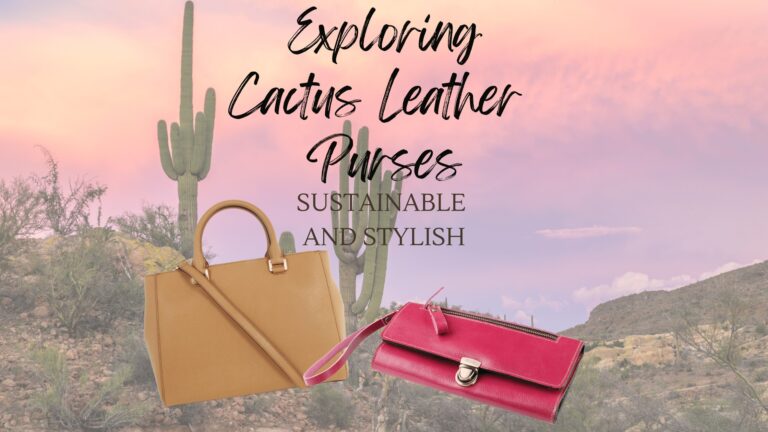

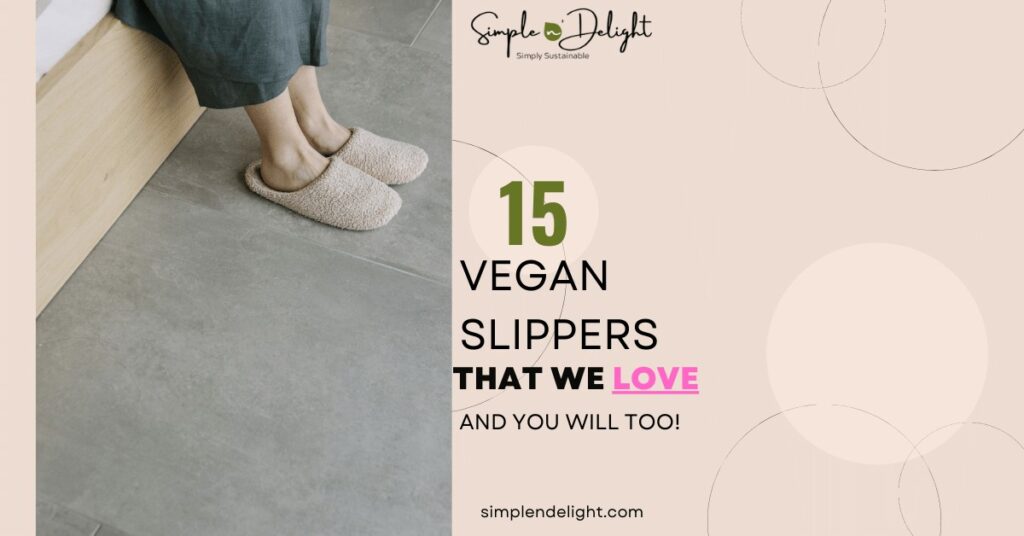




One Response
That is a beautiful purse for almost all occasions and easy to carry.